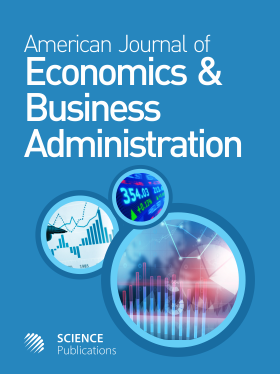Employer Rights and Legal Defenses to OSHA Citations
- 1 Michigan State University College of Law, United States
- 2 University of Windsor, Canada
Abstract
Congress placed a statutory duty on the employer and employee to be safe in the workplace, but the courts do not reciprocate this duty onto employees. 1With plant managers understandably unaware of their rights,2 and with governmental tactics to obtain consent for administrative ease,3 a company's threat to litigation may derive from its ignorance of the law. This paper aims to educate employers of their rights and counter-arguments to Secretary of Labor ("Secretary") litigation as they seek independent legal counsel.
An employer can deny entry of an Occupational Health and Safety Administration ("OSHA") inspector lacking a warrant unless the business is in a pervasively regulated industry. The employer may ask for a copy of the warrant and the basis for the warrant and the OSHA inspector must articulate the scope and purpose of the search. An employer may request counsel to accompany the OSHA inspector during the investigation. Upon completion of the inspection, the Secretary or OSHA must issue a citation within six-months. In other words, the date of discovering a violation or when the alleged violation occurred starts the six-month statute of the limitations for a valid citation to be issued. The employer must appeal by notifying the Secretary within 15 business days after receipt of the citation. The Secretary of Labor always bears the initial burden of proving every element of an Occupational Safety and Health Act ("OSH Act") violation that resulted from the employer's alleged failed compliance.
An employer may raise the Multi-Employer Doctrine to argue it was an employee from another employer that created and controlled the hazard inducing incident. The employer must prove:
"(1) it did not create the violative condition to which its employees were exposed;An employer may argue that the OSH Act compliance is infeasible by demonstrating:
(2) it did not control the violative condition, so that it could not itself have performed the action necessary to abate the condition as required by the standard; and
(3) it took all reasonable alternative measures to protect its employees from the violative condition." 4
"(1) that compliance with a particular standard either is impossible or will render performance of the work impossible; and
(2) that the employer undertook alternative steps to protect its workers or that no such steps were available." 5
To rebut the presumption that the employer bears full responsibility for workplace safety, an employee's isolated and unforeseen misconduct may be held against the employee using the Unpreventable Employee Misconduct Defense. The employer shall need to prove:
"(1) it established work rules or policies designed to prevent the violation;
(2) it has adequately communicated these rules to its employees;
(3) it has taken steps to discover violations of the work rules; and
(4) it has effectively enforced these work rules when violations have been discovered."6
An employer can seek a variance proceeding that allows OSHA to preapprove the alternative safety measure before being issued a citation. However, if the alternative private-sector created safety measure appears unable to provide equivalent safety protection as the OSHA standard, then the employer risks receiving a citation after OSHA makes a final determination. The employer relinquishes the option of arguing the Greater Hazard Defense upon requesting a variance proceeding. The Greater Hazard Defense requires the employer to prove:
(1) compliance with OSHA standards or guidance would result in a greater hazard to employees, which the standard was designed to prevent, than would noncompliance;The employer may seek a variance or risk losing the Greater Hazard Defense. An unjustified failure to seek a variance proceeding shall preclude the Greater Hazard Defense; thus, there is no defense when the employer failed to ask for one when appropriate. If an employer can show it could not seek a variance proceeding due to a statue or procedure, then the defense may be raised. An employer should do everything it can to reduce its employees' exposure to reasonably foreseeable hazards to reduce the gravity of the citation charges, even if the OSHA standard is economically or technically infeasible.
(2) the employer took reasonable alternative protective measures, or there are no alternative means of employee protection; and
(3) a variance was unavailable or applying for a variance would have been inappropriate.7
DOI: https://doi.org/10.3844/ajebasp.2018.31.51

- 13,536 Views
- 6,139 Downloads
- 0 Citations
Download
Keywords
- Fourth Amendmen
- OSHA Inspections
- Multi-Employer Doctrine
- Appeal
- General Duty Clause
- Unpreventable Employee Misconduct
- Greater Hazard Defense
- Infeasibility
- Impossibility Defense
- Burden of Proof
- Work Rule
- Statute of Limitations
